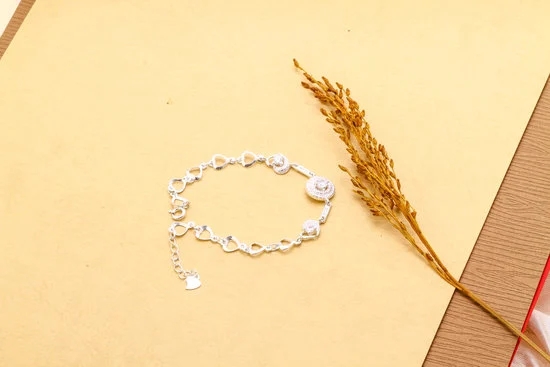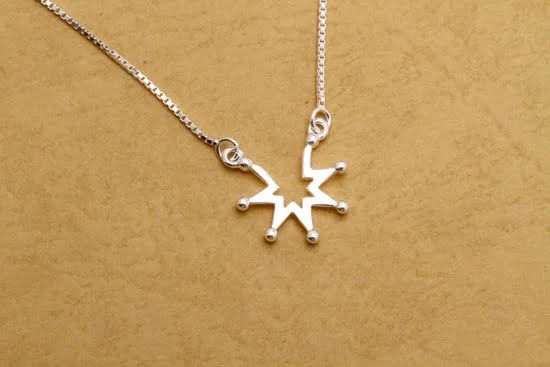Are you a jewelry maker looking to expand your business? Learn how to sell your handmade jewelry to boutiques and tap into the booming market for unique, handcrafted pieces.
With the increasing demand for artisanal and one-of-a-kind accessories, boutiques are the perfect platform to showcase and sell your creations. In this article, we’ll guide you through the process of understanding the boutique market, perfecting your sales pitch, establishing your brand, pricing your jewelry effectively, creating a comprehensive portfolio, and successfully making the pitch to boutique owners.
The handmade jewelry market has been experiencing significant growth in recent years, with consumers seeking out original and personalized pieces. This presents a prime opportunity for jewelry makers to capitalize on this trend by selling their creations to boutiques that cater to customers looking for unique accessories. By understanding the boutique market and honing your sales skills, you can effectively showcase your handmade jewelry to potential customers.
In order to succeed in selling your handmade jewelry to boutiques, it is essential to establish a strong brand identity and create a professional presentation for your jewelry line. Additionally, formulating the right pricing strategy and mastering the art of approaching boutique owners are crucial steps in successfully making a sale.
In the following sections, we will dive deeper into each of these aspects and provide valuable insights to help you navigate the process of selling your handmade jewelry to boutiques effectively.
Understanding the Boutique Market
When it comes to selling your handmade jewelry to boutiques, one of the most important steps is understanding the boutique market and identifying the right retailers to target. This requires thorough research and a clear understanding of the type of boutiques that align with your brand and jewelry style. Here are some key steps to help you in this process:
- Researching the Boutique Market: Start by researching different boutiques in your area or the areas where you would like to sell your jewelry. Look for boutiques that carry handmade or artisanal products, as they are more likely to be interested in your jewelry.
- Identifying Your Target Boutiques: Once you have a list of potential boutiques, narrow it down based on their target market, aesthetic, and price range. Consider whether your jewelry fits with their existing product lines and whether there is a demand for your style of jewelry in their store.
- Networking and Getting Referrals: Reach out to other artisans and jewelry makers who already sell to boutiques and ask for recommendations. Networking within the handmade jewelry community can provide valuable insights into specific boutiques that may be a good fit for your products.
By taking the time to understand the boutique market and identify the right retailers for your handmade jewelry, you can increase your chances of making successful sales while also building strong relationships within the industry.
Additionally, it’s important to consider that not every boutique will be a perfect fit for your handmade jewelry. It’s crucial to target boutiques that cater to customers who appreciate unique, handcrafted pieces. Understanding the specific customer base of each boutique will help you tailor your pitch and presentation when approaching them.
Ultimately, by thoroughly researching and identifying the right boutiques for selling your handmade jewelry, you can strategically position your products in front of potential customers who are likely to appreciate and purchase them. This targeted approach can lead to more successful sales and long-term partnerships with boutique retailers.
Perfecting Your Elevator Pitch
Crafting a compelling elevator pitch is crucial when it comes to selling your handmade jewelry to boutiques. This short and persuasive presentation of your jewelry line can make a lasting impression on boutique owners and increase the likelihood of making a sale. Here are some key tips for perfecting your elevator pitch:
- Know Your Unique Selling Points: Identify what sets your handmade jewelry apart from others in the market. Whether it’s your use of unique materials, a distinctive design aesthetic, or a compelling brand story, emphasize these unique selling points in your pitch.
- Keep It Concise: An elevator pitch should be no longer than 30-60 seconds – the length of an average elevator ride. Be clear, concise, and impactful in communicating the essence of your jewelry line and why it would be a valuable addition to the boutique’s offerings.
- Show Passion and Confidence: Display enthusiasm for your creations and believe in the value they offer. Confidence in yourself and your work can be contagious and will inspire boutique owners to have confidence in representing your jewelry.
Crafting a persuasive sales pitch also involves understanding the needs and preferences of the boutique you are targeting. Tailoring your pitch to align with the style, aesthetic, and target customer base of the boutique can significantly enhance its effectiveness.
Ultimately, the goal of a compelling elevator pitch is to pique interest, start a conversation, and ideally secure an opportunity to show your handmade jewelry collection to the boutique owner. Mastering this aspect of selling to boutiques can open doors for showcasing your creations in retail settings and expanding your customer base.
Remember that creating an effective elevator pitch takes practice, so refine and adjust it based on feedback and real-world interactions with boutique owners until you find what works best for you.
Establishing Your Brand
When selling your handmade jewelry to boutiques, it’s crucial to establish a strong brand identity that sets you apart from the competition. This includes having a clear and cohesive brand image that reflects the style, values, and unique selling points of your jewelry line.
Consider elements such as your brand name, logo, color palette, and overall aesthetic when creating your brand identity. Additionally, think about the story behind your jewelry and what makes it special – this can help create an emotional connection with potential boutique partners.
Creating a professional presentation for your jewelry line is essential when approaching boutiques. This includes high-quality photographs of your jewelry, either worn or displayed in an appealing manner. You may also want to consider investing in professionally designed marketing materials such as lookbooks or catalogs that showcase your collection. This not only demonstrates the professionalism of your brand but also helps boutique owners envision how your jewelry will fit into their store.
Another important aspect of establishing your brand is having a strong online presence. In today’s digital age, boutiques often research potential vendors online before making any commitments. Having a professional website and active social media accounts can not only help showcase your brand to potential boutique partners but also attract customers to their stores once they start carrying your jewelry.
| Brand Elements | Professional Presentation |
|---|---|
| Brand name | High-quality photographs |
| Logo | Professionally designed marketing materials |
| Color palette | A strong online presence (website, social media) |
Pricing Your Jewelry
When it comes to selling your handmade jewelry to boutiques, determining the right pricing strategy is crucial for appealing to boutique owners and maximizing your profits. Setting the right price for your jewelry can make or break a sale, so it’s important to carefully consider various factors when deciding on the pricing strategy for your unique pieces.
One key factor to consider when pricing your handmade jewelry is the cost of materials. Calculate how much you spent on quality materials such as gemstones, beads, metals, and any other components used in creating your jewelry. Additionally, factor in the time spent creating each piece – this includes not only the actual crafting time but also any design work, research, and marketing efforts.
Another consideration in determining the right pricing strategy for your handmade jewelry is understanding the market and knowing what similar pieces are being sold for in boutiques. Researching other brands and designers that are successfully selling their handmade jewelry to boutiques can help you understand the competitive landscape and make informed pricing decisions.
Furthermore, it’s essential to factor in a reasonable profit margin when setting prices for your handmade jewelry. This will enable you to cover not only the cost of materials and labor but also any overhead expenses associated with running your business. By carefully considering these factors, you can set a fair and competitive price point that appeals to boutique owners and ensures that you’re fairly compensated for your craftsmanship.
| Factors | Considerations |
|---|---|
| Cost of materials | Calculate spending on quality materials such as gemstones, beads, metals |
| Market research | Understand what similar pieces are being sold for in boutiques |
| Profit margin | Ensure a fair profit margin that covers all expenses associated with running a business |
Creating a Portfolio
When it comes to selling your handmade jewelry to boutiques, having a visually appealing and comprehensive portfolio is crucial. This portfolio serves as a visual representation of your brand and showcases the range and style of your jewelry collection. By presenting a well-prepared portfolio to boutique owners, you can effectively communicate the uniqueness and quality of your handmade jewelry.
One important aspect of creating a portfolio is to include high-quality photographs of your jewelry pieces. The photos should accurately capture the details, colors, and overall aesthetic of each piece. It’s essential to invest in professional photography or learn how to take clear, well-lit photos that highlight the beauty of your jewelry. Additionally, consider including lifestyle shots that show your jewelry being worn, which can help potential buyers envision how the pieces will look on their customers.
In addition to photos, it’s beneficial to provide detailed information about each piece in your portfolio. This includes materials used, dimensions, and any unique features or inspiration behind the design. Providing this information not only demonstrates your attention to detail but also helps boutique owners understand the value and craftsmanship of your handmade jewelry. Furthermore, organizing your portfolio in a visually appealing and easy-to-navigate format will make it more enticing for boutique owners to review.
Overall, creating a standout portfolio involves curating a collection of high-quality images, providing detailed information about each piece, and presenting everything in an organized and visually appealing manner. A compelling portfolio can be an effective tool for showcasing the uniqueness and quality of your handmade jewelry line when approaching boutiques about potential consignment agreements or wholesale opportunities on how to sell your handmade jewelry to boutiques-ultimately helping you make a lasting impression on potential buyers.
Making the Pitch
When it comes to selling your handmade jewelry to boutiques, making the pitch to boutique owners is a crucial step in the process. This is your opportunity to present your jewelry line and convince boutique owners why they should carry your products in their stores. Here are some tips and techniques for approaching boutique owners and successfully making the sale.
Do Your Research
Before approaching any boutique owner, it’s important to do your research. Understand the style and aesthetic of the boutique to ensure that your jewelry aligns with their brand. Take note of the types of products they currently carry and identify how your jewelry could complement their existing inventory. This will show the boutique owner that you value their business and have taken the time to understand their store.
Present Your Best Work
When making the pitch, always present your best work. Select a variety of pieces that showcase the range and versatility of your jewelry line. Make sure your pieces are polished, well-crafted, and reflect your unique style. Presentation is key, so invest in professional packaging or display materials to make a strong visual impact on the boutique owner.
Be Confident and Personable
Approaching boutique owners can be nerve-wracking, but it’s important to exude confidence and be personable during the pitch. Be prepared to talk about your inspiration, design process, and what sets your jewelry apart from others. A positive attitude and genuine enthusiasm for your work can go a long way in winning over boutique owners.
By following these tips and techniques, you can increase your chances of successfully making the sale when approaching boutique owners with your handmade jewelry collection. Remember that building relationships with boutique owners takes time, so stay persistent and continue refining your pitch based on feedback from each meeting.
Establishing a Consignment Agreement
Once you have successfully pitched your handmade jewelry to a boutique and they have expressed interest in carrying your collection, it is important to establish a consignment agreement. This agreement will outline the terms and conditions of how your jewelry will be sold in the boutique, including pricing, commission rates, and the duration of the consignment period.
Determining Pricing and Commission Rates
One of the key aspects of negotiating a consignment agreement with a boutique is determining the pricing and commission rates for your handmade jewelry. You will need to decide on a retail price for each piece of jewelry, as well as the percentage of the sale that the boutique will take as commission.
It is essential to strike a balance between setting competitive prices that appeal to customers while also allowing you to make a profit, and negotiating a fair commission rate with the boutique.
Outlining Consignment Terms
When finalizing the consignment agreement, it is crucial to clearly outline the terms of the consignment. This includes specifying the duration of the consignment period – typically ranging from 30 to 90 days – after which unsold jewelry may be returned to you or extended for an additional period. Additionally, details about payment schedules, inventory management, and any potential promotions or markdowns should be included in the agreement.
Legal Considerations
It is important to consider any legal implications when negotiating and finalizing a consignment agreement with boutiques. Seek legal advice or consult resources specific to crafting consignment contracts for small businesses. Ensure that all terms are mutually beneficial and that both parties fully understand their rights and obligations under the agreement.
By establishing a well-defined consignment agreement with boutiques, you can effectively sell your handmade jewelry on a consignment basis while protecting your interests and ensuring a successful partnership with each boutique carrying your collection.
Follow-Up and Relationship Building
In conclusion, successfully selling your handmade jewelry to boutiques requires a combination of research, preparation, and relationship building. By following the steps outlined in this guide, you can position yourself for success in the competitive boutique market. Understanding the needs and preferences of boutique owners, perfecting your sales pitch, and establishing a strong brand identity are all crucial aspects of the process. Additionally, maintaining a positive and professional relationship with boutique owners is essential for long-term success.
After making the initial pitch and securing a partnership with a boutique, it’s important to follow up regularly to ensure that your jewelry is selling well and that the relationship remains strong. This may involve checking in with the boutique owner periodically, providing additional marketing materials or product support as needed, and addressing any concerns or issues promptly. Building trust and rapport with boutique owners can lead to repeat business opportunities and referrals to other boutiques.
Ultimately, successful selling of your handmade jewelry to boutiques is not just about making the initial sale, but also about fostering ongoing relationships that benefit both parties. By staying organized, staying in touch, and continually improving your product and presentation, you can create a sustainable business model that thrives in the boutique market. With dedication and persistence, you can turn your passion for making jewelry into a lucrative venture by selling to boutiques.
Frequently Asked Questions
What Is the Best Way to Sell My Handmade Jewelry?
The best way to sell handmade jewelry is to start by creating an online presence through a website or social media platform. You can also explore selling on e-commerce websites or local craft fairs to reach a wider audience.
How to Sell Jewelry to Retailers?
Selling jewelry to retailers involves researching and targeting the right stores that align with your brand and style. It’s important to create a professional portfolio, including high-quality photographs and clear pricing, when approaching retailers to showcase your work.
What DIY Jewelry Sells the Most?
DIY jewelry that sells the most often includes personalized or custom pieces, minimalist designs, and trendy styles such as bohemian or geometric jewelry. It’s essential to stay updated with current fashion trends and customer preferences to create in-demand pieces that resonate with buyers.

Welcome to my jewelry blog! My name is Sarah and I am the owner of this blog.
I love making jewelry and sharing my creations with others.
So whether you’re someone who loves wearing jewelry yourself or simply enjoys learning about it, be sure to check out my blog for insightful posts on everything related to this exciting topic!





